All about sandblasting

Sandblasting today is a very important process that is involved in many areas of activity. Sanding different surfaces is very effective when done correctly. For such work, special sandblasting machines are used. In this article, we will take a closer look at them.

Description and working principle
Sandblasting machines are very popular, many specialists turn to their use. Such a device is arranged and consists of the following main components:
- a tank specially designed to hold sand in it;
- a neck, which is used to fill the sand component directly into the tank;
- pressure gauge - it shows what is the air pressure at the inlet;
- compressor connection;
- the formation of a composition of sand and air;
- hose required to supply the resulting air-sand combination.


The principle of sandblasting is quite simple and straightforward. There are no extremely difficult stages of work here. Let's consider in detail how such equipment functions.
- Under the influence of high pressure, air is automatically supplied from the compressor to the area where it is further distributed.
- In the aforementioned distribution sector, sand and air are mixed when it comes to a pressure type apparatus.
- Further, there is a supply of sand of a certain type of fraction from the tank. The resulting mixture of the mixture is then sent through a hose directly to a special nozzle, which in the next step throws sand onto the part, which is being processed by the operator / foreman.
- In the place where the compressor is connected to the device, special filtering components are additionally installed. It is they who are called upon to filter air masses from excess condensate so that the working mixture is optimally dry.


If we compare the work of sandblasting with other similar devices, then you can find a lot of similarities with an ordinary spray gun. There is one serious difference between these units, which lies in the material that is used for high-quality processing of certain surfaces. A sandblasting machine is primarily a pneumatic apparatus, therefore, for its correct and efficient operation, it is required to have a very good and serviceable compressor of sufficient power. Some craftsmen use simple compressors for a car - similar examples will also work.


Applications of machines
As mentioned above, sandblasting machines are used in a wide variety of applications today. Most often, such equipment is used to work in automotive workshops during the processing of various surfaces. Often, it is sandblasting that is used to remove the remnants of old paint or primer mixture, as well as traces of corrosion. The base, competently prepared by means of a sandblaster, becomes perfectly smooth, clean and neat. The new paint coat adheres much better to such surfaces.




None of the existing tools are capable of cleaning surfaces more effectively than sandblasting. After treatment with the device in question, all the smallest and most insignificant cracks and pores are cleaned. One of the significant advantages of the operation of this device is the absence of scratches that may remain after cleaning procedures. Usually, such defects remain if cleaning is carried out using abrasives, brushes or sandpaper - these problems do not arise from sandblasting.


Metal substrates that have been properly sandblasted are much easier to prime with a primer. The latter adhere better to such surfaces. This has a beneficial effect on the quality of the further painting of the parts.
Sandblasting machines are used with enviable regularity in other areas, and not only in auto repair shops. With their help, metal parts are fully cleaned in shipbuilding plants and other industries where metal components are used. With sandblasting, you can clean wood and concrete surfaces well.




Such procedures are especially relevant when it comes to construction and renovation work. Sandblasting machines are also used for the artistic processing of wood and glass. Thanks to such procedures, it is possible to achieve a variety of interesting patterns on surfaces that cannot be reproduced with other existing methods.


Equipment types
Sandblasting machines are different. Such equipment for processing and cleaning various surfaces is divided according to many characteristics. For example, there are units that supply abrasive components in different ways or are divided according to the conditions in which they can be used. Each type of equipment has its own distinctive features and characteristics. Let's get to know them better.

By the method of feeding the abrasive
First of all, all sandblasting machines are divided in accordance with the method by which the abrasive is fed. Let's find out what kind of devices are, and what parameters they have.
- Injection. Injection-type sandblasting is very common today. In this type of equipment, abrasive components and air flows are supplied through separate arms of the structure. Further, a vacuum process takes place in the equipment, after which the abrasive material begins to be sucked directly into the air stream.


- Pressure head. There is also such a subtype of sandblasting that works a little differently than injection. In pressurized equipment, both abrasive components and air flows are supplied through the same hose. The tank for the abrasive in the unit in question is necessarily made ideally sealed and strong, since it is into it that air is supplied under the action of very high pressure.


Users can choose for themselves both a fairly simple (household) and a professional device. Of course, industrial sandblasting will have completely different power indicators, therefore, the consumption of sand in it will be impressive.
Terms of use
Sandblasting machines are divided not only according to the principle of their operation, but also according to the operating conditions. In accordance with this criterion, there are 2 main subgroups of the considered equipment.
- Open type. Such units are usually used only outside various premises. This is not a home option. Open-type devices are relatively inexpensive, which attracts many users. Such a sandblast looks very neat, it is compact, it is easy to carry from place to place. However, when working with an open device, craftsmen are always faced with a very high level of dust. The field of this abrasive cannot be re-collected and reused, and the consumption of the abrasive mixture itself turns out to be quite large here.


- Closed type. This type of sandblaster can be used safely in a closed environment. Such devices are also called sandblasting chambers. The equipment in question is characterized by high power ratings. By using closed-type sandblasting, the operator can achieve better and better working results.


Popular models
Currently, the range of sandblasting machines is constantly growing and is replenished with new items. There are many high-quality, reliable and effective devices of various types on the market. Consider a small rating and review of the best models of sandblasting machines from well-known manufacturers.
- "Aveyron". Many high-quality and effective sandblasting machines, developed specifically for foundry laboratories and dental laboratories, are produced by this domestic manufacturer. For example, for foundry laboratories "Averon" offers excellent sandblasting ASOZ 1 ART KAST. The model has a pneumatic valve in 4 positions, a reliable electric accumulator. Cleaning of surfaces is carried out by means of a very powerful jet, which is formed by means of the MS 4.3B module.


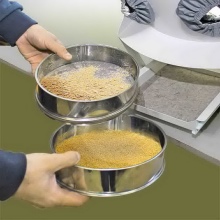
- "Russian Master" RM-99191. Inexpensive hand and mobile model of recirculating sandblasting gun. It is in great demand because it has an affordable cost and small size with high efficiency. The device is manufactured in China, has an operating pressure of 4 to 5 bar. It is characterized by low consumption of materials, ideal for removing pitting corrosion.


- Clemco SCW 2040. The top pressure-type apparatus has a tank volume of 100 liters. The model belongs to the professional category. Designed specifically for work in large facilities or industries. Clemco SCW 2040 demonstrates very high efficiency rates, the dispenser in the device supports all types of abrasives. True, the unit is quite expensive.


- Big Red TR4012. Another model of pressurized sandblasting with a tank of 40 liters. The device has compact dimensions, so it is very convenient to work with it. Big Red TR4012 is productive and maintainable, and also has a very affordable cost.


- "Bulat" PS-24. Pressure unit with a small reservoir of 24 liters. Suitable for home. Users can independently adjust all the necessary pressure parameters of the device. The product boasts a very reliable and high quality assembly. A durable and efficient device has a low price. True, only 1 nozzle is included with this sandblasting machine, which will have to be replaced very often.


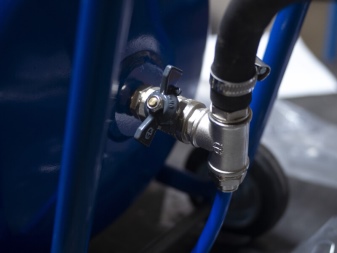

- ACO 200. The installation is also pressure-driven. It has a reservoir for as much as 200 liters. It can be filled with abrasive in the form of sand, steel balls and other similar components. There are very thick walls inside the container, so the structure is made as reliable and strong as possible. The unit is lightweight and convenient, has high-strength and powerful hoses. It boasts the absence of serious flaws.


- Sorokin 10.5 90 liters. Chamber type equipment. Differs in very good build quality and high work efficiency. The device is compact and lightweight, it is very convenient to carry it from one place to another. Has a democratic cost, which attracts many consumers.


Of course, the list of high-quality and reliable models does not end with the above-mentioned top-end models of sandblasting. In stores, customers can find many more excellent devices that will demonstrate high efficiency and reliability.
Spare parts and components
Modern sandblasting machines have many different parts in their design. Consider what parts and components for such equipment can be purchased in stores:
- additional nozzles for wet cleaning;
- nozzles;
- pneumatic remote control systems;
- hose and moisture separator;
- different types of compounds, for example, crab compound;
- nozzle holders and seals of various types;
- Air Dryer;
- clamps and sandblasting sleeve;
- various types of brushes, such as a stone brush;
- slide valve and metering valves.




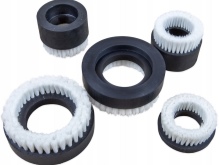
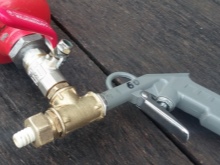
Today, in specialized stores, you can find almost any spare parts necessary for the correct operation of sandblasting. The main thing is to choose exactly those parts that are ideal for your specific equipment.
Frequent problems
Using modern sandblasting equipment, people often face certain problems. Let's take a look at the most common ones.
- When operating mobile and hand-held devices, many craftsmen are faced with the fact that they have to equip a separate space to work with them. It is important to provide an adequate level of safety for others, which often becomes a serious problem.
- If the air comes in jerks, then the unevenly distributed composition begins to gather into lumps. After that, the equipment begins to "spit out" them. To solve this problem, you have to install a larger receiver, and at the same time change the compressor.
- If we are talking about piston equipment, then during work with it, you can notice a large release of piston oil. This leads to a failure of equipment, up to a complete failure. To solve the problem, you have to install special oil and moisture traps.
- Stationary equipment is often clogged. To prevent this from happening, the master needs to clean the equipment on time, do not start it and monitor the condition.
- During operation, certain consumables that are present in the sandblasting structure often fail. These can be rings for a nozzle, rubber seals. In order not to stop work due to such breakdowns, it is advisable to change all the necessary consumables in a timely manner, as well as to have spare parts near the place of work.




Criterias of choice
When choosing the perfect compressor model, it is important to start from a number of basic criteria. Thus, the buyer will be able to find on sale the ideal equipment that will suit him in all respects.
- Power level. Choose equipment that will be able to cope with the work that you have planned. Please note that for a weak compressor, many procedures can be difficult and too long. However, in search of "spare" equipment for the garage, it is not necessary to spend money on an overly powerful option.
- Dimensions, mobility. Modern sandblasters are made as rather bulky, and portable or even hand-held. Decide for what purposes you are purchasing equipment, whether you will often have to move it from place to place. If you need portable and lightweight equipment, it is advisable to look for more compact and lightweight specimens.
- Specifications. Be sure to study all the technical specifications of the device you are planning to buy. Understand what type of sandblasting belongs to, and for what conditions it is designed. This must be taken into account, because dental and jewelry laboratories require their own models, and for a car repair shop - their own.
- Brand. It is recommended to buy only branded sandblasting equipment. Well-known manufacturers produce really high-quality, efficient and safe units, which are covered by the warranty.
- The state of the device. Before paying, it is recommended to carefully inspect the equipment for loose parts, missing parts and other possible damage. If the state of technology raises even the slightest suspicion, it is better to refuse to buy it. Look for other equipment or go to another retail outlet.




Finding the perfect sandblast is not as difficult as it might seem. The main thing is to immediately determine what exactly it is needed for and where it will be used.
What abrasives should you use?
In order for sandblasting equipment to fulfill its main purpose, it is necessary to select the ideal abrasive components for it. Currently, the choice of abrasives is so great that it can be difficult to choose the optimal product. For each specific task, users can choose a specific view. The most popular abrasives used for sandblasting machines are:
- quartz sand;
- copper slag and nickel slag;
- abrasives made of plastic;
- glass shot;
- garnet (or pomegranate sand);
- cast iron acid shot;
- steel shot.
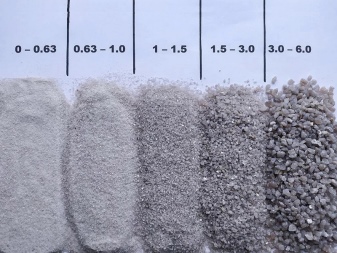



It is difficult to say which of the listed ingredients is the best. Each of the abrasives has its own characteristics of hardness, brittleness, cleaning speed.
Features of operation
Sandblasting equipment, like any other, must be used correctly. Let's analyze the main features of the operation of such equipment.
- Before starting the compressor, the user must make sure that all connections of key components are in working order and that the device is not damaged in any way.
- Care must be taken to operate the pressure sensor. This is the only way the master can correctly and accurately select the ideal working performance of the equipment.
- The sandblasting nozzle must initially be made from high strength metal alloys. Pay attention to this parameter. If the nozzle is made of too cheap material, it may become unusable after the first use.
- It is necessary to fill the equipment with such an abrasive that will correspond to the layer of rust that is planned to be removed. Large particles are suitable for rough processing, and small ones for finishing work.
- When working with very small particles flying at high speed in the form of an air-jet jet, it is important to use quality personal protective equipment. These are respirators, protective clothing and a mask.


If you take into account these simple features of sandblasting operation, then it will be very easy to set up and use it, and in the end you will be able to get excellent results.













The comment was sent successfully.